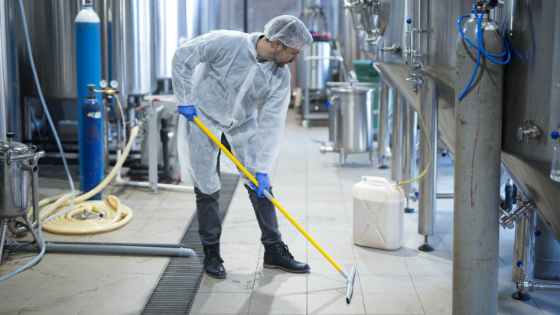A common theme in our society that has risen since the prominence of COVID-19 is the increased emphasis on mitigating risk and increasing safety, both at home and the workplace. A strong workplace culture that puts priority on safety is critical for the success of any business in any market no matter what. With vaccines being distributed at a rapid rate in the United States, many businesses in several states are bringing employees back to the office for business as usual.
However, it’s difficult to assume anything will feel the same, and because of that, commercial real estate owners, office managers and safety professionals will have to take more significant steps to make employees feel safe in the office. Chief among those steps are regularly scheduled office cleanings. If you are a property manager or a leader in the workplace, check out our tips below for the best practices to maintain safety at work.
The Difference Among Clean, Disinfected, and Sanitized
There are some offices that routinely ‘clean’ everyday, but all that means is wiping down surfaces in high traffic areas or taking out the trash. In 2021, that simply won’t cut it to mitigate health risks and give your employees peace of mind. While these routine cleanings should still take place regularly, office spaces should also get weekly, if not daily, sanitized and disinfected deep cleans in order to eliminate as much risk of exposure to employees as possible.
Yes, before you ask, there is a definitive, scientific difference between cleaning and disinfecting/sanitizing. Routine cleaning is defined as removing dust or dirt from surfaces but does not necessarily mean eliminating surface area germs. Meanwhile sanitizing and disinfecting refers to the act of specifically cleaning through the use of chemically killing germs. A surface area that has been thoroughly disinfected (by the EPA’s standards) means that 99.999% of pathogens are killed, including bacteria and viruses, by either chemicals, heat, or a combination of the two.
So as a decision-maker in the office, you should encourage your employees to clean their areas of work. However, the onus is on you or your CRE property manager to hire a commercial cleaning service to routinely sanitize and disinfect your office space.
Is There a Such Thing as Too Often
In short, no. Your office space should be deep cleaned as often as your budgetary constraints allow for it. If your business is bringing in employees regularly, or on a rotated schedule, the office should be disinfected or sanitized at least once a week so that germs or any viral pathogens are spread among your employees. Additionally, a deep clean refers to taking sufficient measures that improve air quality such as replacing air filtration devices and improving the air flow in the office.
After all, by taking safety precautions in advance, you are reducing (but never eliminating) risk of a super spreader event where a large portion of your workforce is afflicted with COVID-19 for several weeks. Because the virus has a delayed incubation period, and the side effects can vary from person-to-person, the long term problems are difficult to quantify. If office managers are not willing to take precautionary measures, they’d be better off just allowing employees to continue to work from home. Therefore, it’s best to put your best foot forward ahead of time and mitigate hazards.
The purpose of the office is to be a haven for employees to collaborate in a safe manner and that becomes difficult if employees are constantly worried about contracting the virus.
Intangible Benefits
Beyond the obvious benefits of increasing productivity from having employees back into the office, and reducing potential risks of spreading pathogens, there is also a psychological benefit for building managers and employees alike in knowing that your workspace is being routinely sanitized and disinfected.
In the 13 months, reported cases of anxiety and depression are up exponentially due to everything that has resulted from the pandemic. More than likely, your employees are experiencing some of these emotions, and coming back to the office has the potential to be a trigger for them. So if you can do your part in making them feel comfortable re-adjusting to an office work setting, it’s worth the additional investment.
Conclusion
A year ago, the world practically came to a standstill. Our society was rocked and ravaged by COVID and we’re still reeling with the ramifications. But as we start to shift back to a sense of normalcy, people are asking what they can do to preserve safety, especially in the workplace. So as employees begin to trickle back into the office, property managers and safety professionals need to ask themselves, “Am I doing enough to make people feel comfortable working in this building?” If the answer is no, some tough conversations ought to be had to make employees feel sufficiently comfortable in doing their jobs.
